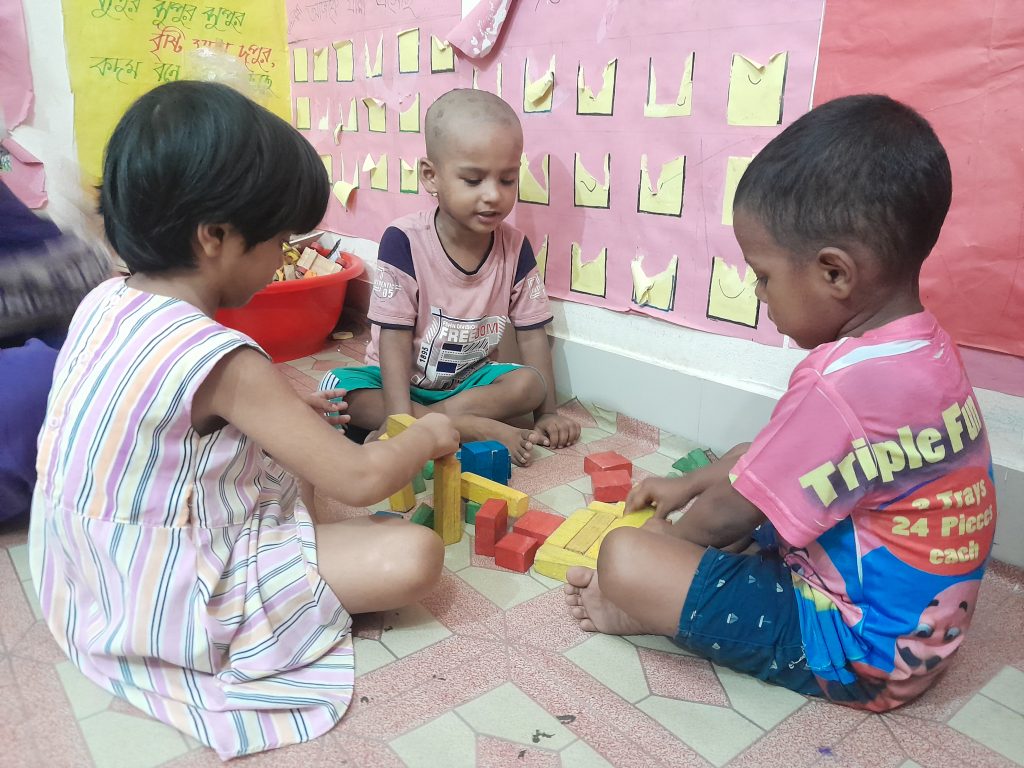Symbolic thought is a fundamental cognitive ability that allows humans to use symbols such as words, images, and gestures to represent objects, concepts, and ideas. It plays a critical role in human development and is the foundation for play, language, and literacy.

Table of Content
- Symbolic Thought and Play
- Symbolic Thought and Language
- Symbolic Thought and Literacy
- Conclusion
The interconnected elements like play language and literacy enable individuals to communicate, learn, and engage with the world in meaningful ways. Child development is a comprehensive process where cognitive development is one of the most essential domain for childhood development. Symbolic thought is a significant step for cognitive development of a child.
Symbolic Thought and Play
Play is one of the earliest manifestations of symbolic thought in children. Through play, children engage in activities that represent real-life situations, allowing them to explore and make sense of their environment. Pretend play, in particular, is a significant milestone in cognitive development. When a child uses a stick as a sword or pretends a doll is a baby, they are engaging in symbolic representation, demonstrating their ability to think abstractly.
Initiating creative ideas within the children, play puts potential contribution. Relating to this, play nurtures the essential competencies like problem-solving skills, social development, and emotional regulation. It provides a foundation for future cognitive abilities, including language and literacy, by encouraging the use of symbols and representation in various contexts.
Symbolic Thought and Language
Language is one of the most powerful forms of symbolic thought. Words are symbols that stand for objects, actions, and ideas, enabling complex communication. The ability to use and understand language allows individuals to share thoughts, express emotions, and convey abstract concepts.
Children acquire language through interaction with caregivers and their environment. Practicing the conversation with peers and adults around the children expand their vocabulary with associate words with objects and experiences. Having this practice, children gradually grasp the notion of grammar. Cognitive development of children grows through this progression. Language holds the multipurpose use, not only the way to communicate but also for thinking, reasoning, and problem-solving.
The growth of language skills is strongly associated to play. Through role-playing and storytelling, children experiment with words and sentence structures, reinforcing their understanding of symbolic representation. Conversations, nursery rhymes, and storytelling all contribute to a child’s linguistic growth.
Symbolic Thought and Literacy
Literacy the ability to read and write is a more advanced form of symbolic thought. Getting of it the reader can understand that written symbols (letters and words) represent spoken language and meaning. Learning to read involves decoding symbols, recognizing patterns, and comprehending context, while writing requires encoding thoughts into symbolic representation.
Early literacy development begins with exposure to books, storytelling, and print-rich environments. Recognizing letters, understanding that words carry meaning, and engaging in writing activities all contribute to literacy skills. Just as play and language development rely on symbolic representation, literacy builds on this foundation by teaching individuals to interpret and create written symbols.
Reading and writing not only enhance communication but also open doors to knowledge, critical thinking, and cultural expression. Literacy skills allow individuals to engage with the world more effectively, shaping their ability to learn, connect, and participate in society. If you would like to learn more Click here.
Conclusion
Symbolic thought is at the core of human cognition, enabling play, language, and literacy. Play is the effective tool that convey children the ability of abstract and creative thinking. Language provides a medium for communication and intellectual growth, while literacy extends these abilities into the written domain. Together, these elements form a crucial foundation for learning, self-expression, and social interaction, highlighting the importance of fostering symbolic thought in early childhood and beyond. If you need more information Click here.
Pingback: Language and Literacy Understanding and Astounding Using - ECD Explorer